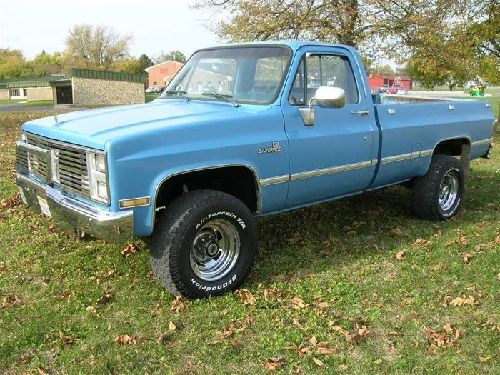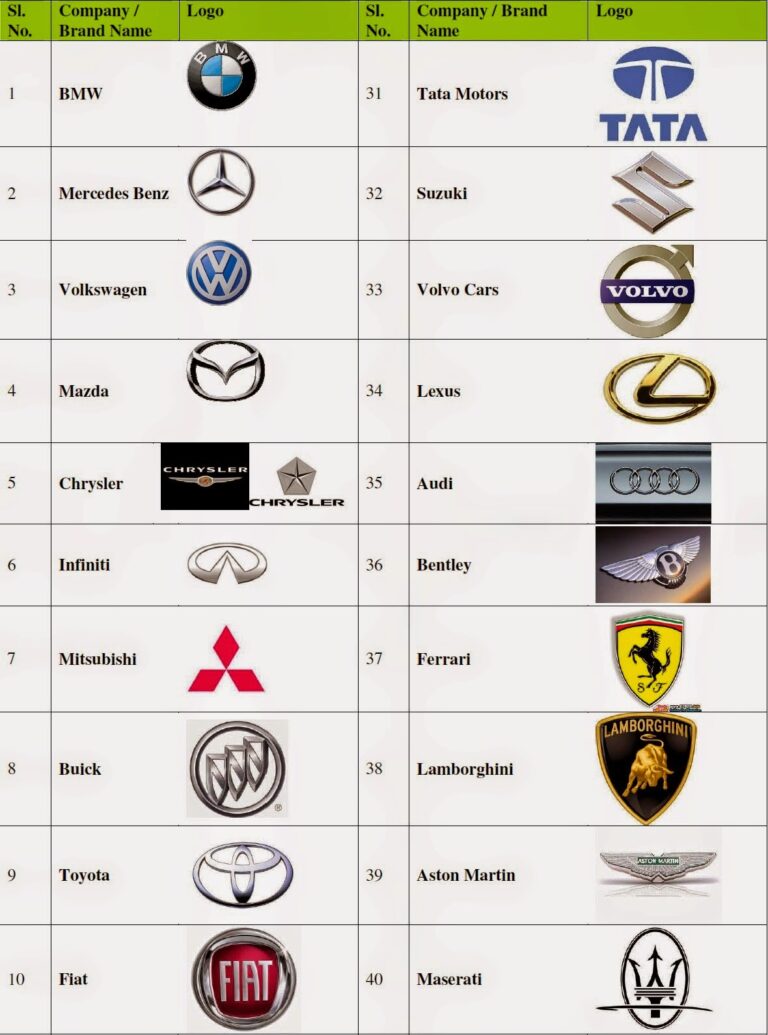Best Car Oil Brand: A Comprehensive Guide to Protecting Your Engine
Best Car Oil Brand: A Comprehensive Guide to Protecting Your Engine cars.truckstrend.com
The engine is the heart of your car, a complex marvel of engineering with countless moving parts working in precise harmony. At the core of its longevity and optimal performance lies a often-underestimated hero: engine oil. Far more than just a lubricant, car oil is a vital fluid that cools, cleans, seals, and protects your engine from the relentless forces of friction and heat. Choosing the "best" car oil brand isn’t a simple matter of picking the most expensive or popular option; it’s about making an informed decision tailored to your specific vehicle, driving conditions, and manufacturer recommendations.
This comprehensive guide will demystify the world of engine oil, helping you understand its critical role, navigate the various types and specifications, and ultimately select the ideal oil to ensure your engine runs smoothly and reliably for years to come.
Best Car Oil Brand: A Comprehensive Guide to Protecting Your Engine
Understanding Car Oil: More Than Just Lubrication
Engine oil performs a multi-faceted role, crucial for the health and efficiency of your vehicle’s power plant. Its primary functions include:
- Lubrication: This is the most well-known function. Oil creates a thin film between moving metal parts (like pistons, crankshafts, and camshafts), reducing friction and preventing direct metal-on-metal contact that would lead to wear and eventual seizure.
- Cooling: As engine parts rub against each other, they generate immense heat. Oil absorbs this heat from critical areas and dissipates it as it circulates through the engine, helping to maintain optimal operating temperatures.
- Cleaning: Engine oil contains detergents and dispersants that prevent the buildup of sludge, varnish, and carbon deposits. These additives hold contaminants in suspension until they can be removed during an oil change.
- Sealing: Oil helps to create a seal between the piston rings and cylinder walls, preventing combustion gases from escaping into the crankcase and maintaining compression for efficient power generation.
- Corrosion Protection: Engine oil contains anti-corrosion additives that protect internal metal components from rust and acid buildup, which can result from combustion byproducts.

Neglecting regular oil changes or using the wrong type of oil can lead to catastrophic engine damage, costly repairs, and significantly reduced vehicle lifespan.
Types of Engine Oil: Decoding the Options
The automotive market offers several distinct types of engine oil, each with its own characteristics, benefits, and ideal applications. Understanding these differences is key to making the right choice.
1. Conventional (Mineral) Oil

- Description: Derived directly from crude oil, conventional oil is the least refined and most basic type. It’s suitable for older vehicle models with simpler engine designs and lower performance demands.
- Pros: Most affordable option.
- Cons: Less resistant to temperature extremes, breaks down faster, offers less protection against wear and sludge buildup compared to synthetic options.
- Best For: Older vehicles, low-mileage drivers, or those on a very tight budget who perform frequent oil changes.

2. Synthetic Blend Oil
- Description: A mix of conventional and synthetic base oils, synthetic blends offer a compromise between cost and performance. They provide better protection and performance than conventional oils but are more affordable than full synthetics.
- Pros: Improved wear protection, better resistance to oxidation and thermal breakdown than conventional oil, often a good upgrade for vehicles previously using conventional oil.
- Cons: Does not offer the full benefits of a 100% synthetic oil.
- Best For: Many modern vehicles, drivers seeking enhanced protection without the full cost of synthetic, or those transitioning from conventional oil.
3. Full Synthetic Oil
- Description: Engineered from highly refined base oils and advanced chemical additives, full synthetic oils offer superior performance and protection. They are designed to withstand extreme temperatures, resist breakdown, and provide exceptional lubrication.
- Pros: Excellent protection against wear, sludge, and deposits; improved fuel efficiency; superior performance in extreme hot and cold temperatures; extended oil change intervals possible.
- Cons: Most expensive option.
- Best For: Most modern vehicles, high-performance cars, vehicles operating in extreme climates, turbocharged engines, and drivers seeking maximum engine longevity and efficiency. Many manufacturers now require full synthetic oil.
4. High-Mileage Oil
- Description: Specifically formulated for vehicles with over 75,000 miles (or higher, depending on brand). These oils often contain seal conditioners to prevent leaks and reduce oil consumption, as well as enhanced detergents to clean up existing sludge.
- Pros: Rejuvenates seals, reduces oil leaks and consumption, provides extra cleaning for older engines.
- Cons: Not necessary for newer vehicles.
- Best For: Older vehicles showing signs of oil leaks, burning oil, or reduced performance due to age.
Deciphering Oil Specifications and Ratings
Beyond the type of oil, you’ll encounter a series of codes and acronyms on the oil bottle. Understanding these is crucial for matching the oil to your engine’s requirements.
1. Viscosity (SAE Rating)
The most prominent rating is the SAE (Society of Automotive Engineers) viscosity grade, like 5W-30 or 0W-20.
- The first number (e.g., "5W"): Refers to the oil’s viscosity (thickness) at low temperatures ("W" stands for Winter). A lower number indicates thinner oil, which flows more easily in cold weather, providing better cold-start protection.
- The second number (e.g., "30"): Refers to the oil’s viscosity at operating temperature (100°C/212°F). A higher number indicates thicker oil, which maintains a stronger film at high temperatures and under heavy loads.
Always consult your owner’s manual for the recommended viscosity for your vehicle.
2. API Service Classification
The American Petroleum Institute (API) provides a quality classification system for engine oils. Look for the "API Donut" symbol on the bottle.
- "S" Series (Spark Ignition): For gasoline engines (e.g., SN, SP). The second letter indicates the performance level; higher letters (e.g., SP is newer than SN) denote more advanced formulations that meet stricter performance standards for newer engines. SP is the current standard.
- "C" Series (Compression Ignition): For diesel engines (e.g., CJ-4, CK-4).
3. ILSAC GF-6
The International Lubricant Standardization and Approval Committee (ILSAC) sets fuel economy and emissions standards. GF-6 is the latest standard, split into:
- GF-6A: Backward compatible with previous standards, suitable for many modern gasoline engines.
- GF-6B: Designed specifically for 0W-16 viscosity oils, not backward compatible.
These ratings indicate oils that meet stringent requirements for fuel efficiency, engine cleanliness, and wear protection.
4. OEM Approvals
Many vehicle manufacturers (OEMs) have their own specific oil specifications and approvals (e.g., GM’s Dexos, VW 504 00/507 00, Mercedes-Benz 229.5). If your owner’s manual specifies an OEM approval, it is crucial to use oil that explicitly states it meets that standard. These approvals indicate the oil has undergone rigorous testing by the manufacturer to ensure optimal performance and protection for their specific engine designs.
Key Considerations When Choosing the "Best" Car Oil
The concept of the "best" car oil is highly individualized. Here’s what you need to consider:
- Your Vehicle’s Owner’s Manual: This is the ultimate authority. It specifies the exact oil type, viscosity grade, and API/ILSAC/OEM specifications your engine requires. Deviating from these recommendations can void your warranty and potentially damage your engine.
- Driving Conditions:
- Extreme Temperatures: If you live in very cold or very hot climates, a full synthetic oil with a wide viscosity range (e.g., 0W-20 or 5W-40) offers superior protection.
- Heavy Driving/Towing: Frequent heavy loads or aggressive driving put more stress on the engine, warranting a robust full synthetic oil.
- Stop-and-Go Traffic: This type of driving causes more wear and heat cycles, benefiting from the superior protection of synthetic oils.
- Vehicle Age and Mileage:
- Newer Vehicles: Almost universally require full synthetic oil due to tighter tolerances, direct injection, and turbochargers.
- Older Vehicles: May still use conventional or synthetic blend, but high-mileage oil can be beneficial if mileage is high.
- Engine Type: Turbocharged or direct-injection engines are particularly sensitive to oil quality due to increased heat and pressure, making full synthetic oil a necessity. Diesel engines require specific diesel-rated oils (C-series API).
- Budget vs. Performance: While full synthetics are more expensive upfront, their extended change intervals and superior protection can lead to long-term savings in fuel efficiency and reduced wear, often making them a more economical choice in the long run.
Leading Car Oil Brands: A Closer Look
While no single brand is universally "best," several manufacturers consistently produce high-quality engine oils across various categories. Here are some of the most reputable:
- Mobil 1: A pioneer in synthetic oils, Mobil 1 is widely recognized for its premium performance, extensive OEM approvals, and exceptional protection in extreme conditions. It’s often factory-fill in high-performance vehicles.
- Castrol: With a long history in lubrication, Castrol offers a diverse range of products, including their popular Edge (full synthetic) and Magnatec (synthetic blend) lines. They are known for advanced fluid engineering.
- Pennzoil: Renowned for their PurePlus Technology, which converts natural gas into a 99.5% pure synthetic base oil, Pennzoil claims superior engine cleanliness and performance. Their Ultra Platinum line is highly regarded.
- Valvoline: One of the oldest American oil brands, Valvoline offers a wide array of products, including their popular MaxLife high-mileage oil and Advanced Full Synthetic. They are known for innovation and reliability.
- Shell Rotella: While traditionally strong in the heavy-duty diesel market, Shell also produces high-quality gasoline engine oils. Rotella T6 is a favorite among many for its robust protection.
- Royal Purple: Positioned as a premium, high-performance oil, Royal Purple is favored by enthusiasts and racers for its exceptional wear protection and power-enhancing properties, though it comes at a higher price point.
- Quaker State: A more budget-friendly option, Quaker State offers reliable conventional, blend, and synthetic oils, often providing good value for everyday drivers.
Choosing among these reputable brands often comes down to specific product lines, availability, and personal preference, always guided by your vehicle’s manual.
The Benefits of Using the Right Engine Oil
Investing in the correct, high-quality engine oil for your vehicle yields numerous benefits:
- Extended Engine Life: Reduced friction and wear mean less stress on components, significantly prolonging the engine’s lifespan.
- Improved Fuel Efficiency: Properly lubricated engines operate with less resistance, leading to better mileage.
- Reduced Emissions: Cleaner combustion and less oil breakdown contribute to lower harmful emissions.
- Enhanced Performance: A healthy engine delivers its intended power and responsiveness.
- Better Cold-Start Protection: Especially with synthetics, oil flows quickly to critical parts, reducing wear during the crucial startup phase.
- Cleaner Engine Internals: Detergents and dispersants keep deposits at bay, preventing sludge and varnish that can impede oil flow and performance.
- Maintained Warranty: Using the manufacturer-recommended oil is often a condition of your vehicle’s warranty.
How to Check and Change Your Car Oil (Brief Guide)
While professional oil changes are common, knowing how to check your oil is a fundamental maintenance skill.
Checking Your Oil:
- Park on a Level Surface: Ensure the engine is off and has cooled for at least 5-10 minutes for oil to settle in the pan.
- Locate Dipstick: Pull out the dipstick (usually with a brightly colored handle).
- Wipe and Reinsert: Wipe the dipstick clean with a cloth, reinsert it fully, then pull it out again.
- Check Level: The oil level should be between the "MIN" and "MAX" (or "ADD" and "FULL") marks.
- Observe Color/Consistency: New oil is amber/golden. Dark brown or black oil indicates it’s doing its job, but gritty texture or a milky appearance (indicating coolant contamination) are red flags requiring immediate attention.
Changing Your Oil (Simplified):
- Safety First: Always use jack stands if lifting the car. Ensure the engine is warm but not hot.
- Drain Oil: Place a drain pan under the oil pan, remove the drain plug, and let the old oil drain completely.
- Replace Filter: Unscrew the old oil filter (use a filter wrench), apply a thin film of new oil to the gasket of the new filter, and hand-tighten the new filter.
- Refill Oil: Replace the drain plug. Consult your manual for the correct oil capacity and slowly pour in the new oil using a funnel.
- Check Level: Start the engine for a minute, then shut it off, wait a few minutes, and recheck the oil level with the dipstick. Top up if necessary.
- Dispose Responsibly: Never pour used oil down the drain. Recycle it at an auto parts store or designated facility.
Oil Change Intervals: Always follow your car manufacturer’s recommendations in the owner’s manual. Modern cars with synthetic oil often have intervals of 7,500 to 15,000 miles or once a year, whichever comes first. Severe driving conditions (e.g., extreme temperatures, heavy towing, frequent short trips) may necessitate more frequent changes.
Common Challenges and Solutions
- Choosing the Wrong Oil: The biggest challenge. Solution: ALWAYS consult your owner’s manual first. If unsure, ask a certified mechanic or dealership service department.
- Counterfeit Oil: A growing problem. Solution: Purchase oil only from reputable retailers, authorized dealerships, or well-known auto parts stores. Be wary of unusually low prices.
- Extended Drain Intervals: While synthetics allow for longer intervals, blindly extending them without monitoring can be risky. Solution: Follow manufacturer recommendations. For very long intervals, consider oil analysis services.
- Oil Leaks: If you notice puddles or significant oil consumption, it’s a sign of a leak. Solution: Address leaks promptly. High-mileage oils can help with minor seal seepage, but major leaks require professional repair.
- Mixing Oil Types: Generally discouraged. While a small top-off with a different type won’t cause immediate damage, it dilutes the benefits of higher-quality oil. Solution: Stick to the same type and brand if possible.
Price Table: Typical Car Oil Brand Pricing (Estimated)
Please note: Prices are estimated typical retail prices per quart/liter in the US and can vary significantly based on specific product line (e.g., high-performance vs. standard synthetic), packaging (single quart vs. 5-quart jug), retailer, promotions, and region. Always check current local prices.
| Brand | Oil Type | Typical Price per Quart/Liter (USD) | Key Features/Notes |
|---|---|---|---|
| Mobil 1 | Full Synthetic | $8 – $12 | Premium performance, wide OEM approvals, excellent cold-start, long drain intervals. |
| Castrol | Full Synthetic | $7 – $11 | Diverse product lines (Edge, Magnatec), strong protection, popular globally. |
| Pennzoil | Full Synthetic | $7 – $10 | PurePlus Technology (natural gas-derived), good for engine cleanliness. |
| Valvoline | Full Synthetic | $6 – $9 | MaxLife (high mileage), Advanced Full Synthetic, good value. |
| Royal Purple | Full Synthetic | $10 – $15 | High-performance, racing applications, superior wear protection. |
| Quaker State | Full Synthetic | $5 – $8 | More budget-friendly synthetic option, good all-around protection. |
| Mobil 1 | Synthetic Blend | $5 – $7 | Good balance of price and performance, often for older or less demanding engines. |
| Valvoline | Synthetic Blend | $4 – $6 | Versatile, good for bridging conventional to synthetic. |
| Castrol | Conventional | $3 – $5 | Basic lubrication for older vehicles or very low mileage. |
| Pennzoil | Conventional | $3 – $5 | Standard protection, often good for budget-conscious users. |
Frequently Asked Questions (FAQ)
Q1: What does 5W-30 mean?
A1: 5W-30 is a multi-grade viscosity rating. "5W" refers to its performance in cold weather ("W" for Winter); a lower number means it flows better at low temperatures. "30" refers to its viscosity at engine operating temperature; a higher number means it’s thicker at high temperatures.
Q2: How often should I change my oil?
A2: Always follow your car manufacturer’s recommendations in your owner’s manual. Modern vehicles with synthetic oil typically recommend changes every 7,500 to 15,000 miles or once a year, whichever comes first. Driving conditions (e.g., extreme heat/cold, heavy towing, short trips) can necessitate more frequent changes.
Q3: Can I mix different brands or types of oil?
A3: While a small amount for a top-off likely won’t cause immediate harm, it’s generally not recommended. Mixing different types (e.g., conventional and synthetic) will dilute the benefits of the higher-quality oil. It’s best to stick to the same type and brand recommended by your manufacturer.
Q4: Is synthetic oil worth the extra cost?
A4: Yes, for most modern vehicles, synthetic oil is well worth the extra cost. It offers superior protection against wear, sludge, and extreme temperatures, often leads to better fuel efficiency, and allows for longer oil change intervals, potentially saving you money in the long run. Many new car warranties now require synthetic oil.
Q5: What happens if I use the wrong oil?
A5: Using the wrong oil can lead to several problems, including increased engine wear, reduced fuel efficiency, sludge buildup, poor cold-start performance, and potentially even engine damage or failure over time. It can also void your vehicle’s warranty.
Q6: How do I know if my oil needs changing?
A6: The best indicator is your vehicle’s mileage and the time since the last oil change, as per your owner’s manual. Additionally, you can check the dipstick: very dark, gritty, or milky oil are signs it needs changing. Some modern vehicles also have an oil life monitoring system that alerts you.
Conclusion
Choosing the "best" car oil brand isn’t about finding a single, universal champion, but rather about making an informed decision that aligns with your vehicle’s specific needs and your driving habits. The ultimate "best" oil is the one that meets or exceeds your car manufacturer’s specifications, whether it’s a conventional blend for an older model or a high-performance full synthetic for a modern, turbocharged engine.
By understanding the different types of oil, deciphering their specifications, and consulting your owner’s manual, you empower yourself to make a choice that will provide optimal protection, enhance performance, and significantly extend the life of your most valuable automotive asset – your engine. Investing in the right oil is not just maintenance; it’s a smart investment in your vehicle’s future.





